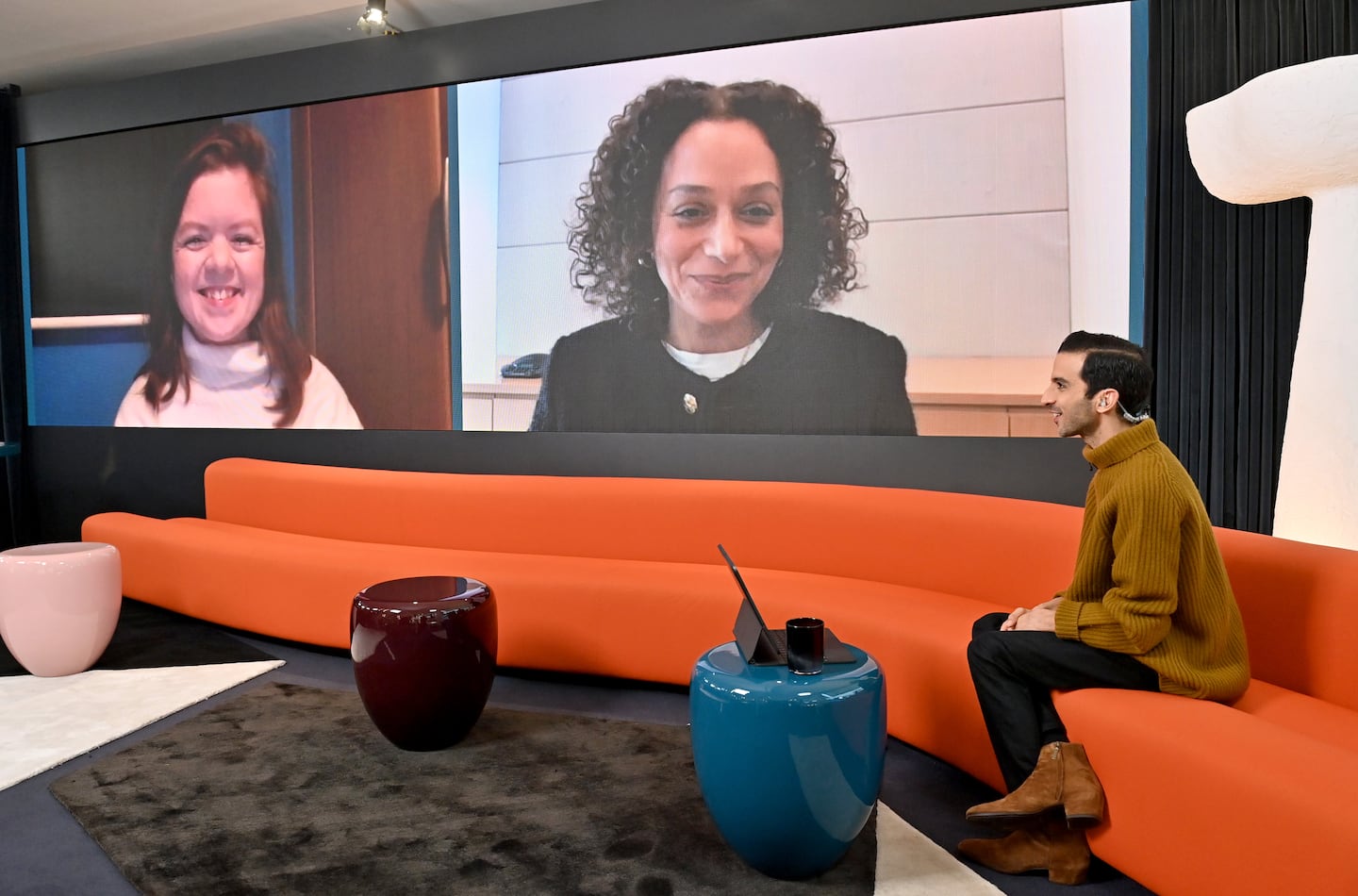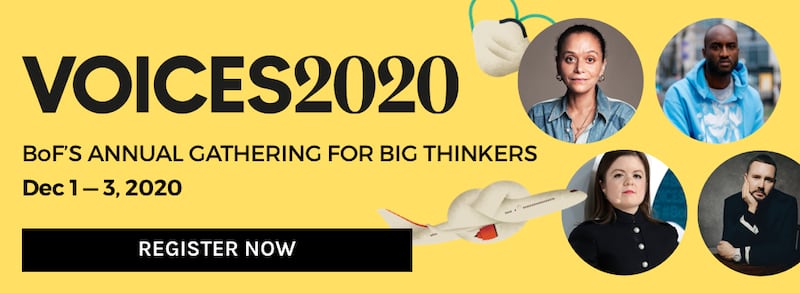
The Business of Fashion
Agenda-setting intelligence, analysis and advice for the global fashion community.

Agenda-setting intelligence, analysis and advice for the global fashion community.

 Opens in new window
Opens in new windowWednesday at VOICES, BoF’s annual gathering for big thinkers, fashion leaders looked ahead. Designers Anya Hindmarch and Dries Van Noten and Harper’s Bazaar editor-in-chief Samira Nasr, among others, spoke about seizing the moment and finally making the systemic changes they believe the industry needs to move forward.
“This crisis could be an opportunity,” Moncler’s chairman and chief executive Remo Ruffini said. “You cannot stay sitting in your chair for two or three years. We need to find new projects and new ways to work.”
The State of Fashion
After global fashion sales fell by 27 percent to 30 percent this year, according to estimates in BoF and McKinsey’s State of Fashion 2021 report (released Wednesday), the industry is bracing for a difficult and (likely incomplete) recovery next year. McKinsey senior partner Achim Berg and BoF founder and chief executive Imran Amed broke down the report’s insights.
ADVERTISEMENT
Depending on various scenarios for how long it will take to get the coronavirus pandemic under control, global fashion sales will could remain as low as 10 percent to 15 percent below 2019 levels, or rebound more rapidly to between flat and 5 percent lower. Only 32 percent of fashion executives expect the trading environment to get better next year. The majority of respondents believe conditions will remain the same or get worse, according to a survey in the report.
The majority of fashion executives do believe, however, that the companies they work for will be able to adapt. They’re focused on ramping up online sales, whose share of the fashion market has boomed this year, and further developing their businesses in China, where overall fashion sales are already expected to bounce back to 2019 levels as early as the fourth quarter of 2020.
Moncler Looks to China
Ruffini agreed that the fashion industry was in for a long recovery, and that the fashion market was unlikely to return to pre-pandemic norms before 2023.
Amid the rising importance of both digital and China, he’s planning to stage the launch for his next round of “Genius” collaborations in the country this September, with an event mixing physical and online elements. Since 2018, the Italian outerwear label’s Genius programme — a series of ultra-hyped, one-off collections from guest designers — has been a key driver of online buzz.
“The collection will be more customer-centric,” Ruffini said. “We’ll still have people there, but with a different approach.”
Building a Better System
Closer coordination among stakeholders is one positive upshot from the current crisis, according Hindmarch. In a conversation with Van Noten and Tomorrow London chief executive Stefano Martinetto, led by Amed, she explained how a collective of fashion designers, distributors, e-commerce companies and retailers have banded together to tackle a number of challenges the industry is facing. Two groups formed at the pandemic, Van Noten’s The Forum and BoF-facilitated Rewiring Fashion, are now joining together to move the agenda forward.
ADVERTISEMENT
“We shouldn’t come out the way we came in, because it wasn’t working before,” Hindmarch said. “It’s about a timetable that works. It’s about getting product delivered in relevant seasons; it’s about getting full margin sales. It’s about relationships with wholesale. It’s about fashion week.”
Van Noten struck an optimistic tone about how the pandemic’s challenges could spark creativity among both designers and retailers, who are fighting for relevancy.
“I’m excited to see what people will show in February,” he said. The real creative explosion is going to start only now.
While many traditional brick-and-mortar retailers need to “rethink their role,” as brands prioritise direct-to-consumer sales, he sees a brighter future for the latest crop of smaller multi-brand stores that offer high levels of curation. “There’s a kind of new energy there,” he added.
Prioritising Inclusion
Another topic that was front and centre for fashion leaders was how to avoid tokenism, and build sincere inclusivity into their organisations.
“Change isn’t good enough if it’s just change for me,” said activist and writer Sinéad Burke. “I’m thinking about how to measure and put a process in place so that there’s systemic change.”
“The best dinner parties are the ones with more difference. You don’t want to be sitting there with someone with the same ideas,” added Nasr, who was appointed editor-in-chief of the US edition of Harper’s Bazaar in June. “I’m bringing in people on my team who have other perspectives and strengths that I don’t.”
ADVERTISEMENT
This year’s reckoning in the US with police violence and systemic racism underscored the urgency of breaking down barriers diversity and inclusion. Media publications and fashion brands alike grappled with addressing that challenge in a meaningful way. Fashion leaders spoke Wednesday about the need to build more inclusive teams, as well as acknowledging systemic barriers that make it harder for certain groups, including minorities and those that come from lower-income socioeconomic backgrounds, to participate. For instance, unpaid internships are commonplace throughout the sector, and serve as a significant barrier to attracting different kinds of talent.
Filmmaker Aaron Christian sought to raise awareness on that issue, screening a short film about an aspiring web designer for whom a big break was thwarted because he was financially unable to work for free.
“Creativity is abundant, talent is abundant, but opportunity isn’t,” Christian said.
One young talent offered an inspiring example of what’s possible. Oluwole Olosunde, a practising nurse-turned-fashion designer, earned a fast-following on Instagram, and soon after, the respect of the industry as a budding newcomer, rising to fame without the typical connections that come with such inclusion.
“How can we breathe a new life into fashion?” Olosunde asked. His trajectory may be part of the answer.
Related Articles:
The State of Fashion 2021 Report: Finding Promise in Perilous Times
Designers Lobby to ‘Fix’ the Fashion System. Will It Work?
Dries Van Noten Proposes Reset to Fashion’s Deliveries and Discounting Calendar
VOICES 2020 is made possible in part through our partners McKinsey & Company, Affirm, SCAD and Invisible Collection.
From analysis of the global fashion and beauty industries to career and personal advice, BoF’s founder and CEO, Imran Amed, will be answering your questions on Sunday, February 18, 2024 during London Fashion Week.
The State of Fashion 2024 breaks down the 10 themes that will define the industry in the year ahead.
Imran Amed reviews the most important fashion stories of the year and shares his predictions on what this means for the industry in 2024.
After three days of inspiring talks, guests closed out BoF’s gathering for big thinkers with a black tie gala followed by an intimate performance from Rita Ora — guest starring Billy Porter.